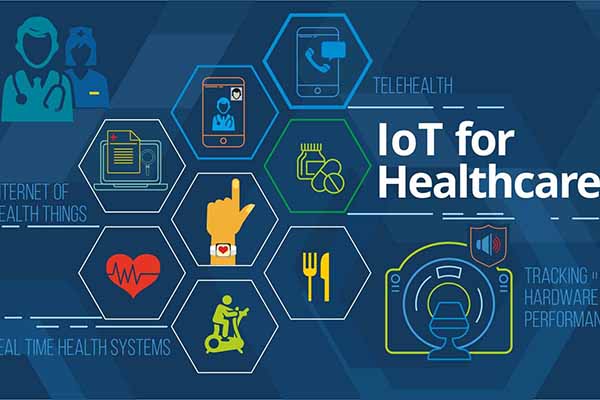The healthcare industry witnessed tectonic shifts in the past two years both in terms of integrating the ever-evolving state-of-the-art technologies and increasing the sector’s share in the economy. With the sceptre of Covid still hanging over us even after two years of hardship and extensive vaccination, it can be surely said the healthcare sector will stay central to India’s economic recovery. Even though fully vaccinating the country against COVID-19 remains the top priority, the sector needs to start tackling the backlog non-Covid cases. For this, the industry needs to take the online route for the last-mile delivery of services and also to ensure round-the-clock continuum care.
Online delivery of healthcare was in its nascent stage before Covid but became a pillar of providing services during the pandemic that forced the clamping down of a 12-weeks-long harsh lockdown. The government responded positively, framing policies that boosted telemedicine services, and online wellness products and also attempted to address concerns about the privacy of patient data, improve people’s access to the Internet and rectify weaknesses in the telecom infrastructure.
Online revolution – the path to IoT
With the government shoring up policies for online healthcare services, the industry started adopting artificial intelligence, machine learning and the Internet of Things (IoT) more vigorously in providing services as well as products to maintain efficiency in service amid the pandemic that has put a tremendous burden on the sector, stretching it to the limits.
IoT in healthcare incorporates sensing technology, wireless communication, data security services, and cloud computing to ameliorate preventative healthcare as well as diagnosis, treatment, and health monitoring. The new-generation healthcare gadgets monitor the body’s vital signs as well as wellness regime and also control the administration of medicines and therapy. IoT-based healthcare solutions have proven to improve the efficiency and quality of therapies while at the same time reducing cost.
It also raised engagement with patients and made interaction with doctors easy and efficient. With IoT allowing remote monitoring of patients, they don’t need to stay at hospitals for long while re-admission also gets reduced. IoT also has a huge impact on cutting healthcare costs and improving treatment outcomes.
IoT in aiding Covid fight
When India was hit by the deadly Delta variant of coronavirus and became the global epicentre of Covid infections, demand for medical oxygen skyrocketed. With a 10-fold rise in the demand, hospitals reached the breaking point and people suffocated. Everybody scrambled to replenish a fast-dwindling oxygen stock and many hospitals were forced to put “oxygen out of stock” boards at the gates. The saving grace was oxygen concentrators, the demand for which skyrocketed.
These machines concentrate oxygen from the air and help patients in breathing. As demand rose, so did research on making these life-saving machines smarter so that these can people with respiratory ailments can manage their oxygen treatment remotely. The outcome was the custom application of the Internet of Things (IoT) using a run-time engine for applications platforms so that patients, doctors and service providers can monitor data carefully. Now, oxygen saturation in patients can be monitored by these devices and the amount of oxygen delivered can be regulated automatically.
Into the future
Smart devices are the future and IoT enables it. It has brought a revolution in the healthcare industry and is on the way to changing it beyond recognition. According to industry experts, the market for the Internet of Things is likely to grow to USD 188 billion globally by 2024, at a CAGR of 27.6 per cent. Everybody wants a pie of this evolving and lucrative market by improving their solution and investing to adopt such technologies. But to achieve that, several challenges need to be addressed first. Patient privacy is paramount and data security has to be efficient. Another point of concern is the slowing down of data exchange due to increased complexity caused by the integration of multiple devices of separate protocols. This needs to be fixed right away, else it would defeat the IoT’s purpose of real-time monitoring of patient data.
In this age of technology and an interconnected world, data is the new gold. And given the vastness of the healthcare sector data is a goldmine for the stakeholders for bettering patients’ health, creating revenue opportunities and improving operations. Being prepared to harness this digital power will prove to be the differentiator in this interconnected world.
Dr. Vineet Aggarwal CIO of Paras Healthcare adds, “In a traditional hospital setting, doctors always rely on different investigations to properly diagnose the condition of a patient before prescribing medicines. However, with the advancement of Internet of Things (IoT), several of these parameters can be easily monitored in real-time which can aid in patient rehab and recovery. IoT creates a mesh or web of interconnected devices that are easily controllable through commands. These devices may include home appliances, vehicles and others embedded with electronics, sensors, software, actuators and connectivity which allows these things to connect, gather and exchange data. IoT provides a wide array of bio-sensors and wearable devices that can provide crucial information to healthcare providers regarding a patient’s health. The remote monitoring solutions help the patients to receive proper monitoring and treatment in a remote surroundings or even at home. Transponders or RFID (Radio Frequency identification) are again one of the ways this technology is increasing hospital operational efficiency. RFID enables accurate inventory tracking for pharmaceuticals and medicines, staff and patient tracking, and tool tracking within a surgical setting. Electronic Health Records(EHR) is also changing the way a patient’s info is managed from the time it is gathered to when it is processed and shared within a facility. Over the coming years, IoT will continue to gain traction in the healthcare and pharmaceutical industry. From smart thermostats to fitness trackers, the public is already witnessing the immense benefits of IoT connectivity and it will further pave the way for connected devices to change the face of healthcare.”
About the Author:
Mr. Mohit Sharma co-founder of Absstem Technologies
















